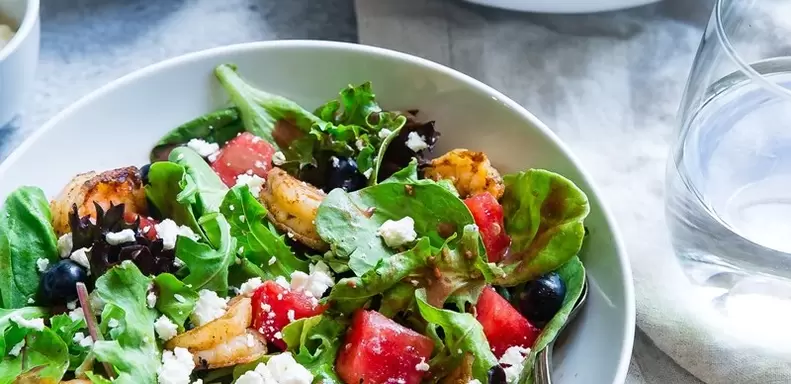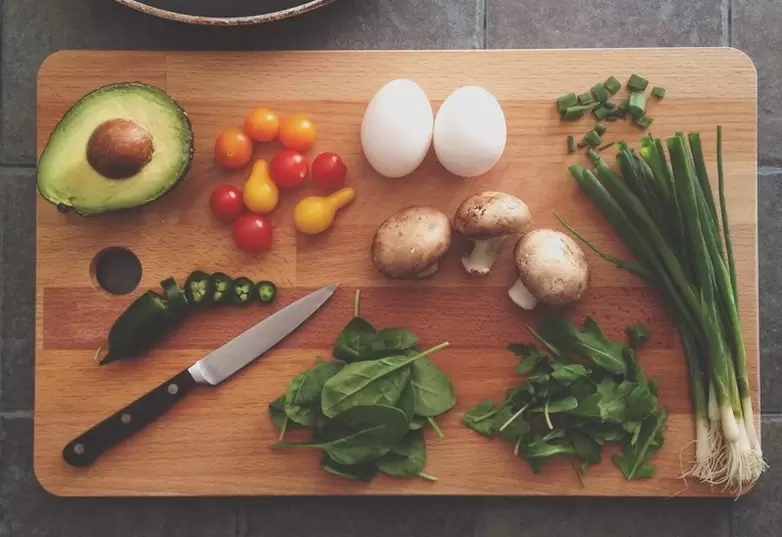
What is it about?Diabetes mellitus is a chronic disease from the group of endocrine diseases.All patients experience improper absorption of glucose, which leads to a deficiency of the hormone insulin, which can be either relative or absolute.
What should be food?A balanced diet, including a large amount of fruits and vegetables, whole grains, low -fat proteins and healthy fats, can help people with diabetes control the blood sugar level.
General power rules for diabetes
Today, the incidence of diabetes is one of the most pressing problems in medicine.Statistics show that since 2013 the number of patients who were diagnosed has doubled.At present, more than 425 million people suffer from him.The forecast, alas, is sad.It is possible that after 10-12 years the number of patients in the world will be 629 million.
Diabetes mellitus is a chronic disease from the endocrine group.In all patients, improper absorption of glucose occurs, which leads to insufficiency of the hormone insulin, which can be either relative or absolute.
As a result, patients develop hyperglycemia, which is characterized by persistent high blood glucose.Diabetes mellitus leads to a violation of each type of metabolism, namely carbohydrate, fat, protein, mineral and water-salt.
It is worth noting for what reasons the disease develops.When a person has destruction or pancreatic cells destroy, type 1 diabetes mellitus begins to progress.Most often, in such a situation, absolute insulin deficiency occurs.Genetics can also play a role here, as well as various external factors - food habits, viral diseases, violation of hygiene principles, etc.

With diabetes of the second type, insulin resistance develops.Within this type, insulin deficiency is relative.It is characterized by persistent hyperglycemia.
Regardless of the type of disease, all patients have an increase in blood sugar.Cells lack carbohydrates due to their resistance to glucose.That is, glucose, instead of going into the cage, just swims in the blood.
Each patient with diabetes should adhere to a diet prescribed by the attending physician.The patient needs to reduce the carbohydrate load by 5-7 %, the amount of fat used should be increased.
Not so long ago, power supply for diabetes meant a complete exclusion of simple carbohydrates.But today, the diet of patients is compiled individually, calculated by KBZHu.From the diabetics themselves you can often hear the following phrase: "With diabetes, there are no strict prohibitions, there is only a healthy lifestyle."
The basis for a diet is a glycemic index that shows the sugar suction rate.
A high glycemic index has a high content of simple carbohydrates.These include confectionery, jam, cookies, etc. That is, sugar is absorbed from them from them quickly enough.Croats, vegetables and fruits have a low index, respectively, the suction rate when they use them decrease.This makes it possible for the pancreas to be easier to cope with the load.
Important:The patient’s diet should include products, the glycemic index of which is below 55. Their splitting occurs gradually, and the blood sugar levels practically does not increase.
Each product has its own insulin index.This indicator shows how much insulin will increase after eating it.The value must be taken into account by each patient with diabetes in order to predict what the body's reaction will be to eating a particular food, as well as to correctly calculate the dosage of insulin as a medicine, short-term and long-acting.Injections of the drug are prescribed by a doctor after meals.
No matter what the patient eats, food intake will in any case lead to the release of insulin.The development of insulin resistance is often determined precisely by the number of so-called “insulin swings”.The more there are, the higher the likelihood of resistance.The latter, in turn, leads to the development of type 2 diabetes.Let's give an example.
Many of us are inclined to believe that dairy and fermented milk products, such as cottage cheese, kefir, yogurt, are the perfect snack.In fact, all these products have a very high insulin index.Thus, the use of them forces the swing of the very swing that leads to a change in the patient’s emotional background, poor mood and irritability.
Below we will look at the basics of nutrition for diabetes.
Diet for type 1 diabetes
Proper balanced diet in type 1 diabetes opens the following possibilities: to reduce the risks of strokes, heart attacks and complications, maintain the normal level of blood glucose, increase the protective mechanisms of the immune system, and get rid of excess weight.Subject to the diet recommended by the attending physician, the patient will feel good.

The main rule is to control the level of glucose in the blood, it should vary within the range from 3.5 to 5.5 mmol/l.The basic principles of nutrition are as follows:
- More than 2 thousand kilocalories should not be consumed daily.
- Fractional power, in small portions.At least 5 meals per day.
- There should be no pure sucrose in the diet, this will maintain a normal glucose level.
- Most of the carbohydrates should be in the first half of the day.
- Abstinence from late meals.
- The maximum exclusion of simple carbohydrates that are contained in baking, jams, confectionery, and honey.
- Using a sucrine.Stevia is perfect here.It is important to give preference to products with a natural composition.
- Building a graph of insulin therapy under the time of food.The prolonged drug is administered before meals, a short -action medicine - after.
- Keeping accounting of bread units.The value of each reception should not be higher than 8 bread units.
If the patient has a history of diseases of the gastrointestinal tract, it should be excluded from his diet salted, smoked, fatty (including bulons), coffee, soda, alcohol, mushrooms, canned products.In other words, one should not use what contributes to excessive secretion of enzymes, since they affect the speed of absorption of carbohydrates.
For diabetics, products are divided into permitted and prohibited.The classification below must be taken into account when compiling a weekly menu.A competent approach will normalize the level of glucose in the blood.Ignoring the recommendations of nutritionists can lead to sad consequences.
Proceeded products for type 1 diabetes:
- Baking prepared without yeast.For example, Lavash.
- Berries and fruits.For example, plum, cherry, citrus fruits, apples, pears.
- Soy products (tofu, milk).
- Cereals and cereals (barley, oatmeal, buckwheat).
- Vegetarian soups, including soups-puree.
- Drinks, including poorly -carbonated mineral water, mousses from berries, unsweetened compotes.
- Vegetables.For example, onions, zucchini, pepper, beets, carrots.
- Nuts.
- Nick -fed coffee, tea without sugar.
Prohibited foods for type 1 diabetes:
- Fat soups and broths.
- Pasta.
- Bakery.
- Confectionery.
- Sweets and chocolate.
- Fast food dishes, semi -finished products.
- Alcohol.A special prohibition is red dessert wine.
- Smoked, sharp, strongly salted.
- Fatty meat, in particular pork, lamb, duck.
- Fat fish.For example, mackerel.

It is important that the products in the diet have a minimum degree of processing during their preparation.
It is advisable to eat vegetables and fruits raw, but in stew, boiled or baked - it is also permissible.Fried food is not recommended by doctors.
If the patient plays sports, then during the period of intense loads, the food can be adjusted, since training leads to a greater consumption of carbohydrates.
In order to avoid a hyperglycemic coma, the patient in his diet is recommended to include vegetable products, which reduces blood glucose.It can be, for example, a blueberry decoction or rosehip tea.
Important:In the presence of a disease, the patient should adhere to an individual diet prescribed by the attending doctor-endocrinologist, and not general recommendations.If in a patient who does insulin, the body mass index indicates obesity, its daily calorie should be from 1200 to 1400 kcal.If there is no need for weight correction, the daily calorie rate increases.
Type 2 diabetes diet
Power supply for type 2 diabetes is based on the following bases:
- Sugar -substitutes are an alternative to refined carbohydrates.
- Proteins should be 20 %of the diet, fats - 30 %, carbohydrates - 50 %.
- Consumption of animal fats should be reduced to 50%.
The daily calorie rate depends on how much energy the patient spends during the day, as well as on his weight.It is necessary that during the day there are 5 meals, dishes for which are cooked either steamed or served in boiled form.
Since diabetics have an increased sensitivity of the kidneys, you cannot overdo it with protein products.The diet must include those products that help improve fat metabolism.These include bran, rosehip flowers, vegetable oils, cereals, fermented milk products.
To understand how effective the diet is, the patient is prescribed tests for blood sugar with a certain frequency.The first fence of blood is made on an empty stomach, next in two hours.If the results differ from normal indicators, the doctor adjusts the patient’s diet, and also changes the dosage of drugs.
Power supply for type 2 diabetes does not differ much with the food habits of people who adhere to a healthy lifestyle.Both those and others feed on small portions, but often.The recommended number of meals per day is 5, they include 3 main meals, each of which is equal to 5-8 bread units, and 2 snacks equal to 1-2 bread units.
You can’t ignore breakfast, it is very important for rational meals.It is necessary to eat at least every 4 hours, the last meal is no later than an hour and a half before bedtime.Following the above recommendations is an excellent prevention of diseases of the cardiovascular system, eye lesions (retinopathy), kidneys (nephropathy), as well as the nervous system (neuropathy).
Useful products for diabetes mellitus
Ginger
Ginger has a positive effect on metabolism, it normalizes the patient's blood glucose indicators, and improves blood coagulation.It is advisable to use it daily.
Whole grains
Products such as whole grain bread, cinema seeds and brown rice prevent the development of diabetes.The normalization of the level of glucose in the blood due to their use can be explained by a sufficient amount in their composition of fiber.Since whole grains create a barrier for sugar jumps, with a special desire to eat something with a high glycemic index, you must definitely add complex carbohydrates to the dish.
Cinnamon
Cinnamon helps to improve the sensitivity of cells to insulin.This spice takes part in the regulation of the level of insulin.In addition, it normalizes blood pressure, so it is recommended to use it not only to diabetics, but also to hypertension.

Citrus
Any citrus fruits have antioxidants.They also normalize the level of insulin.
Nuts
Nuts contain a large amount of mono -saturated fats and magnesium.Statistics show that patients with diabetes who regularly eat nuts suffer less than others from glucose jumps.
Olive oil
The use of olive oil is an excellent prevention of diseases of the cardiovascular system.In addition, the product regulates the level of glucose in the blood.
Fish
Fish is the source of Omega-3.These fatty acids should be a mandatory component of nutrition in diabetes.They synthesize red blood cells, as well as cell membranes, positively affect the absorption of vitamins and minerals with the body, reduce inflammation and prevent the development of insulin resistance.
Legumes
Legumes are another stabilizer of glucose levels in the patient's blood.They have practically no saturated fats that harm the cardiovascular system.
Green sheet vegetables
Salad leaves, spinach, all types of cabbage are the basis of diet in diabetes.Such products are low -calorie, but at the same time they contain a sufficient amount of useful substances.The latter include vitamin C, beta-carotene and magnesium.These elements prevent the development of type 2 diabetes by 14 %.Recommended dosage - 106 grams daily.
Forbidden products for diabetes mellitus
Today, doctors are of the opinion that it is not necessary to strictly limit patients with diabetes in diet.Patients can afford to eat tasty and diverse, but there are a number of products from which it is still recommended to refrain, not only with diabetics, but also to all supporters of a healthy lifestyle.
Some fruits
Some fruits and dried fruits provoke an increase in blood glucose.These include dried apricots, dates, figs, raisins, persimmon, melon, grapes, bananas.
Transfinery
Transfiners are rich in dishes from a fast food menu, as well as margarine, confectionery.They harm not only health, but also a figure.
Semi -finished products
Semi -finished products are prepared using additives such as flavorings, stabilizers, flavor amplifiers.It is especially not recommended to buy fish sticks, cutlets, meatballs, sausages, dumplings and sausage in stores.If you really want to, it is better to cook them yourself.
Fat foods
Fat food provokes blood sugar.Power supply for diabetes should not include ducks, pork, lamb, lard, mayonnaise and fat dairy products.
Bakery
Asso baking should also be excluded.It includes bakery products, muffins and cookies.

Sweet
It is necessary to abandon the sugar in its pure form, as well as from products containing it in large quantities.Under the ban: ice cream, milk chocolate, marmalade, halva, jam, jam and other sweets.
Table No. 9 for diabetes
In the first quarter of the twentieth century, 15 diets for diabetics and patients with other diseases were developed.Their authorship belongs to a well -known nutritionist.Despite the fact that today his system is outdated, it has not lost its effectiveness, so today many doctors still use it.
A place for patients with type 2 diabetes - in 9 tables.Table No. 9 is based on the same principles that are used today: partial or complete rejection of quick carbohydrates, special attention to proteins and fiber.
Diet can still be used, even though it was created more than 100 years ago, but endocrinologists make their own adjustments, depending on the condition of the patient.
Diet for gestational diabetes
Gestational diabetes is a consequence of a malformation of a pancreas of a pregnant woman.As a rule, this condition is easy to control.The main rule is to eat rationally.
- Do not consume sugar, cakes, cakes, sdoba, fruits with a high sugar content, as well as sugar -replacement and products containing it.
- BJU should have the following proportions - 30 %, 20 %, 50 %.
- It is necessary to drink 1.5 to 2 liters of clean drinking water daily.
- Include starchy foods in your diet, including cereals, legumes, sweet potatoes, beets, radishes, as well as fermented milk products.
- Fresh fruits are perfect for a snack.
- The total number of meals is 5, of which 3 are the main and 2 snacks.
- Do not ignore the use of vitamin complexes for expectant mothers.
- To reduce sugar, drink decoctions from plants: celery, linden, lilacs, blueberries and beans.
- Refuse or limit caffeine in the diet.The number of portions of tea and coffee should not exceed 2 daily.
Diabetes mellitus in children
The main causes of the development of diabetes in children are a hereditary predisposition or lack of rational nutrition.In the latter case, we are talking about abuse of simple carbohydrates and sweet.In some cases, diabetes in a child appears as a result of mental or physical trauma.Treatment is selected individually depending on the severity of the disease, the main role is played by nutrition and the introduction of insulin, if we are talking about type 1 diabetes.

The nutrition of children in diabetes must include vegetables: cabbage, onions, spinach and garlic.There are fruits, but only those that contain a minimum amount of sugar.Low -fat meat, poultry and fish are also allowed.Dairy products - provided, provided that they have a low percentage of fat content.Permissible spices that enhance the absorption of proteins are acceptable.
Confectionery and sweet fruits - under a strict prohibition.Rice is also recommended to be excluded.
The attending doctors teach parents of their minor patients to calculate the amount of bread units and the dosage of insulin.Important: the sooner the child learn to do it on his own, the better.
Alcohol for diabetes mellitus
Alcohol is recommended to strictly limit if it is not possible to completely abandon its use.How much alcohol can a patient with diabetes be caused by a patient is determined by the attending physician.
Alcohol in a small amount is permissible, but here it is important to remember some things.
The stronger alcohol, the more calories in it.There are 710 kilocalories per 100 grams of pure alcohol, and this is not much less than in fats.Any alcohol drink also has energy value, it also has carbohydrates.A glass of beer is about 200 kilocalories, and a glass of wine is about 100.
Why is it not recommended to drink alcohol?The thing is that it provokes sugar jumps and can lead to hypoglycemia, that is, to a sharp decrease in glucose levels.When drinking alcohol, alcohol enters the liver, the organ spends its energy on the breakdown of alcohol molecules and forgets that it also needs to release glucose.To prevent this from happening, it is better to take alcohol during meals or immediately after eating.
By the way, some scientists are of the opinion that alcohol in reasonable quantities not only does not harm, but also bears little benefit for patients with type 2 diabetes.
It is important to remember that alcohol provokes the growth of glucose levels, its regular use can lead to the development of diabetes of the second type.
In addition, many drugs cannot be combined with alcohol.Among them are insulin and sulfonylmochevina.This combination can provoke strong hyperglycemia.
How to drink alcohol suffering from diabetes?
- Consider the calorie content of alcohol along with the usual diet.
- Give preference to low -calorie drinks in which there are few calories.
- Do not drink on an empty stomach.
- Eat alcohol.
- Monitor your blood glucose levels.
- In a company where you drink alcohol, warn about your disease.Let people be ready to provide emergency assistance if necessary.
- Do not mix alcohol and medicine.























